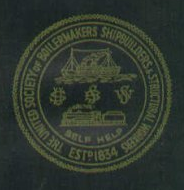The British Labour Amalgamation was an early union representing construction workers, principally in Manchester area of England.

Manchester is a city and metropolitan borough in Greater Manchester, England, with a population of 545,500 as of 2017. It lies within the United Kingdom's second-most populous built-up area, with a population of 2.8 million. It is fringed by the Cheshire Plain to the south, the Pennines to the north and east, and an arc of towns with which it forms a continuous conurbation. The local authority is Manchester City Council.

England is a country that is part of the United Kingdom. It shares land borders with Wales to the west and Scotland to the north-northwest. The Irish Sea lies west of England and the Celtic Sea lies to the southwest. England is separated from continental Europe by the North Sea to the east and the English Channel to the south. The country covers five-eighths of the island of Great Britain, which lies in the North Atlantic, and includes over 100 smaller islands, such as the Isles of Scilly and the Isle of Wight.
The union was organised during 1888 by Leonard Hall, to represent workers constructing the Manchester Ship Canal. Initially named the Manchester Ship Canal Navvies Union, Hall was elected as its first secretary, early in 1889, and its membership soon rose above 3,000. However, all its members in Lancashire and Cheshire left in November 1890, forming the Lancashire and Adjacent Counties Labour Amalgamation, and by 1894 the canal was complete, membership falling to only 450. Hall stood down in 1897, and was replaced as secretary by Tom Fox. [1]

William Leonard Hall was a British trade union leader, journalist, and socialist activist, who held prominent positions in the Independent Labour Party.

The Manchester Ship Canal is a 36-mile-long (58 km) inland waterway in the North West of England linking Manchester to the Irish Sea. Starting at the Mersey Estuary near Liverpool, it generally follows the original routes of the rivers Mersey and Irwell through the historic counties of Cheshire and Lancashire. Several sets of locks lift vessels about 60 feet (18 m) up to Manchester, where the canal's terminus was built. Major landmarks along its route include the Barton Swing Aqueduct, the only swing aqueduct in the world, and Trafford Park, the world's first planned industrial estate and still the largest in Europe.
Tom Fox was a British Labour Party politician.
Under Fox's leadership, the union successfully recruited construction workers on other projects and by 1900 had more than 2,000 members. Due to the changed nature of its membership, it was then renamed as the "British Labour Amalgamation". In 1902, the Lancashire Enginemen, Cranemen and Firemen Electrical and Hydraulic Attendants' Association joined, although most of its former members left again in 1906. It highest membership, 4,872, was reached in 1913, and it merged into the National Union of General Workers in 1917. [1]
The National Union of General Workers (NUGW) was an early general union in the United Kingdom, the most important general union of its era.

